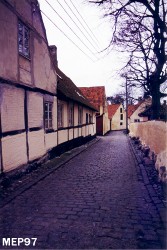The History of Møn
Møn after the last Iceage
For about
15.000 years ago the climate began getting warmer after the last Iceage and the living conditions
in the area that would become Møn slowly improved.
But the ice did not leave without first moulding and creating Møns Klint. Though
the weather was harsh in the later part of the last Iceage both mammoths and
bears lived in the area, remains of these animals have been found on Møn. Now
go on to the Older Stone Age and see what happened next...
The
Palaeolithic Age, Older Stoneage, - 6800 BCE
The Mesolithic Age, 6800 - 3900
BCE
The Neolithic Age, Younger Stoneage,
3900 - 1700 BCE .
The Bronze Age 1700 - 500 BCE
The Iron Age 500 BCE - 800 CE
The Viking Age 800 - 1050
CE and The 11th century
12th century
13th century
14th century
15th century
16th century
17th century
18th century
19th century
20th century
21st century
Stege´s history
Sayings, Myths etc...
The Møn Dress
Information gathered from these sources:
For more information about books about Møn or other resources look at the page: Site Information
After each King mentioned you'll find the period of time in which he reigned.
And then of course: not all of the information on the following pages can be
regarded as historicly correct or accurate facts, as some of the information is hearsay, exaggerated or
based on doubtful old sources. But
it is fun to read anyway!!!
Corrections made: 2/9-2005
Provstestræde i Stege, one of the old streets in Stege


